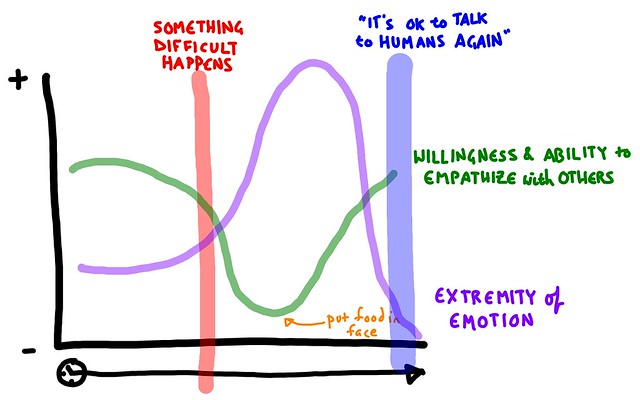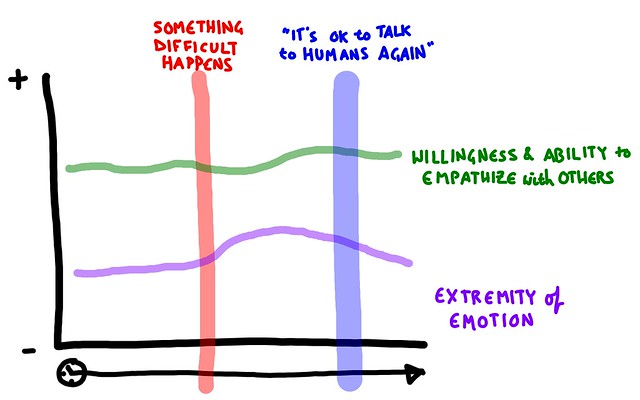Content warning: diet, food
I’ve spent most of my life mitigating what many people call being “hangry.” That is to say, whenever my blood sugar got too low, I would become incapacitated. I couldn’t solve challenges, I got mean in ways I simply am not the rest of the time, and I couldn’t track more than one thing (at most) at a time. I dealt with this by carrying snacks with me everywhere to prevent the onset, and I would get really quiet if I felt the symptoms setting in so I wouldn’t harm people around me. The more active I was being, the more often I would need to eat. To be someone who gets hangry (AKA “hypoglycemic”) is expensive, time consuming, injurious, and distracting. But it has been reality for all my life that I can remember.

There’s this human I’ve been dating for awhile named Reed. We like having conversations about difficult topics and going for long bicycle rides together, among other things. And I started to notice that he could know that he needed to eat, but still be a totally pleasant person and/or get the rest of a ride in before eating food. We talked about if that had always been the case for him – it hadn’t – and what had changed – his diet (keto).
“Seems worth a shot,” I thought to myself.
I’ve never been on a diet before. I’ve always been pretty physically active (although even more so in recent years) but haven’t paid attention to my food intake. I know I am rare in this, and give many thanks to my parents for a healthy home (no scale, no beauty magazines, healthy food only around, structure around sweets) in this regard. So I was worried about making it stick. I’m now 2 months in, and my mood has indeed stabilized.

This has been great. But there are also some second-order effects of this shift worth talking about. Continue reading

